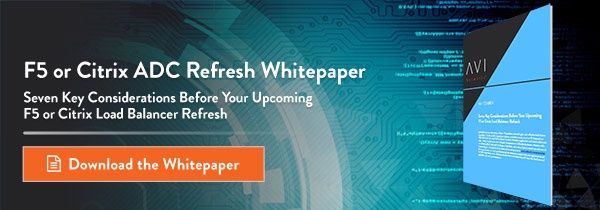More specifically, virtual load balancers are just legacy load balancers trying to find a home in your data center or the cloud.
As your enterprise begins to migrate to the cloud, legacy load balancers are left out in the cold. You can’t take your F5 or Citrix NetScaler hardware with you. Operationally, they just don’t function in cloud environments.
To retain your business, you’d expect these ADC vendors to develop next-generation load balancers designed to work in the cloud… or so you’d think. What F5 and Citrix actually do is extract the software from their hardware appliances and refactor it so it could run on a virtual machine—hence, virtual load balancer.
Because the architecture between virtual and hardware load balancers is similar, virtual load balancers see a significant performance drop as the software is designed for proprietary hardware. <sarcasm> But hey, it can run in the cloud! </sarcasm>
Even though a virtual load balancer can “run” in the cloud, doesn’t mean that it can help your business in the cloud. Virtual load balancers aren’t designed for cloud applications or environments (legacy architecture, remember?), which means that you’re still going to experience the same manual processes you know and love loathe from the data center. Automation, elasticity, and visibility/analytics don’t exist in virtual or legacy load balancers. We touched on this in one of our previous Smart vs Legacy videos.
DID YOU KNOW? Switching from legacy or virtual load balancers to Avi’s Smart Load Balancer can save you money and give you incredible performance and visibility across any data center or cloud.
Just because a load balancer is “software” doesn’t mean it is designed for modern applications, like containers or microservices, or modern infrastructure environments. The goal of your digital transformation isn’t to survive in the cloud, it is to thrive in the cloud. Don’t settle for marketing fluff. A virtual load balancer is a wolf in sheep’s clothing. Or, as you can see in this week’s Smart vs Legacy video, a virtual load balancer is just a legacy load balancer in VR goggles.
If cloud migration is important to you and if you want modern features like elasticity, automation, and visibility/analytics, Avi Networks is worth exploring. Don’t trust our marketing. Contact us to schedule a demo and see it in action. Our product speaks for itself, compare Avi Networks with F5 and Citrix NetScaler to discover the advantages of a modern, elastic, software load balancer.
For related reading, please check out Virtual Load Balancers | Hardware in a Software Disguise.



